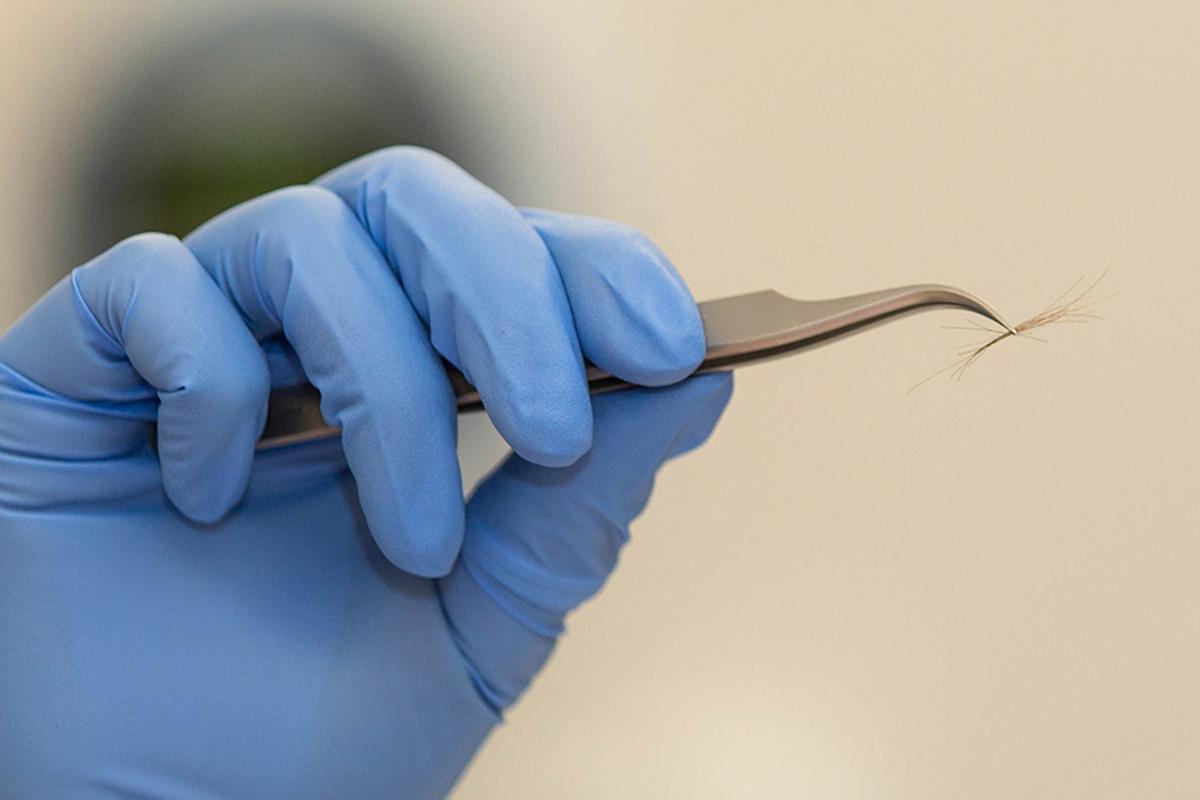Building on a novel forensic approach that analyses proteins in head hair, scientists from Lawrence Livermore National Laboratory's (LLNL) Forensic Science Center (FSC) and Michigan State University have established that it's possible to identify a person from a single hair taken from anywhere on the human body.
If television is anything to go by, getting a positive identification of a person from a single strand of hair is the easiest thing to do, and as accurate as having a suspect picked from line up of cartoon cutouts by his own mother. In fact, hair has a lot of drawbacks that are downright depressing when it comes to making a positive ID.
The best known test is for DNA, but DNA in hair only comes from particular parts of the strand with the rest made up largely of a fibrous protein known as keratin and, according to the authors of the new study, contains only minimal intact nuclear DNA. Worse, the material is highly vulnerable and liable to break down in short order.
Hair protein, on the other hand, provides a wide spectrum of amino acid markers that can be detected by mass spectrometry and can survive for up to 250 years. Back in 2016, scientists from FSC developed a test based on hair proteins from a single strand of head hair, but for the method to be practical, it needs to be applied to hairs from anywhere else on the body. For sexual assault cases, pubic hairs are especially important.
"This new paper focuses on elucidating more of the hair protein chemistry and its effects on the protein marker identification," says chemist Fanny Chu, a graduate student at Michigan State University and a Livermore Graduate Scholar. "We've already shown that we can use human hair from people's heads for identifying people. Now the question arises: Can you get the same identification information from hair in other body locations?"
"In this paper, we studied arm and pubic hair compared with head hair. We found that arm and pubic hair essentially give us the same information as head hair," explains Chu.

According to the team, a statistical analysis of the markers can tell where on the body the hair came from with the protein content of pubic hair significantly higher than head and arm hair. In addition, new amino acid markers have been found that make the method more accurate. Where it originally could pick one person out of a million, it can now use a single one-inch strand to pick one person out of 10 million.
"We've worked to refine the technique so we could do our analysis with only one human hair, which is more forensically relevant," says FSC chemist Deon Anex. "Our expectation is that with further work, we should be able to achieve the 1 in 10 million identification ratio for single hairs from other body locations, especially pubic hair."
The research was published in Scientific Reports.
Source: LLNL






